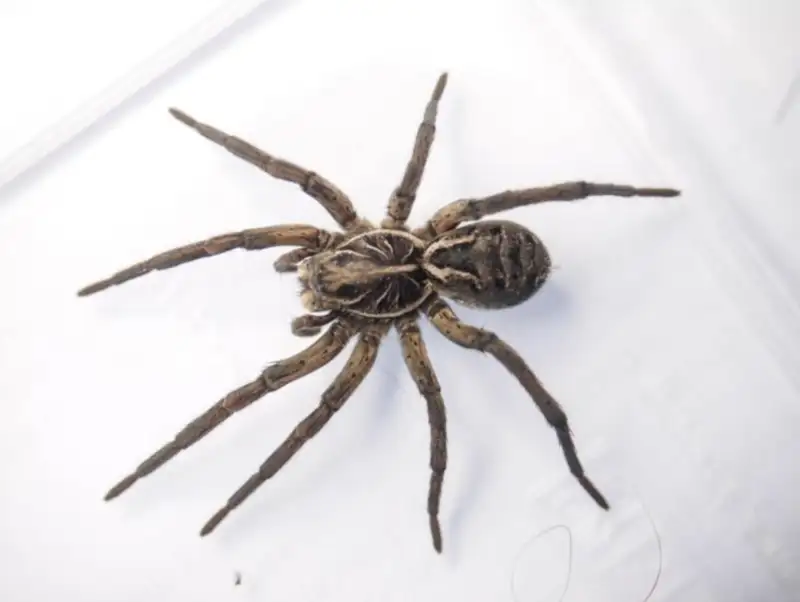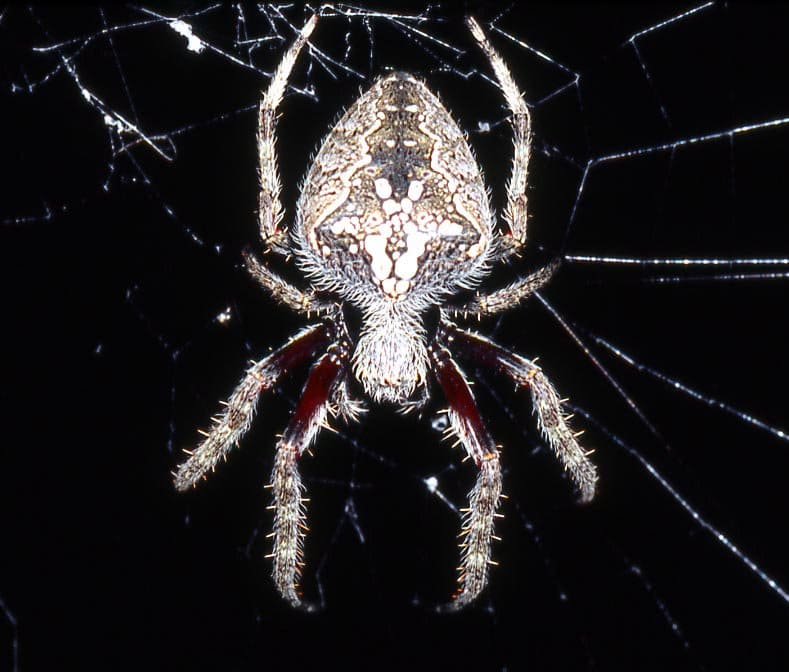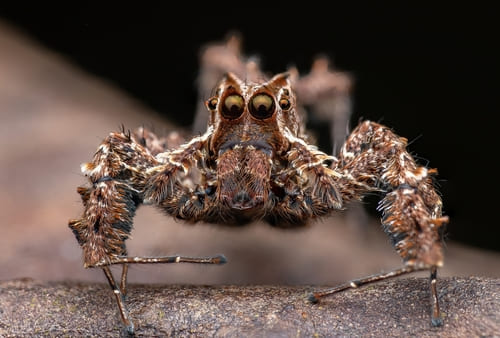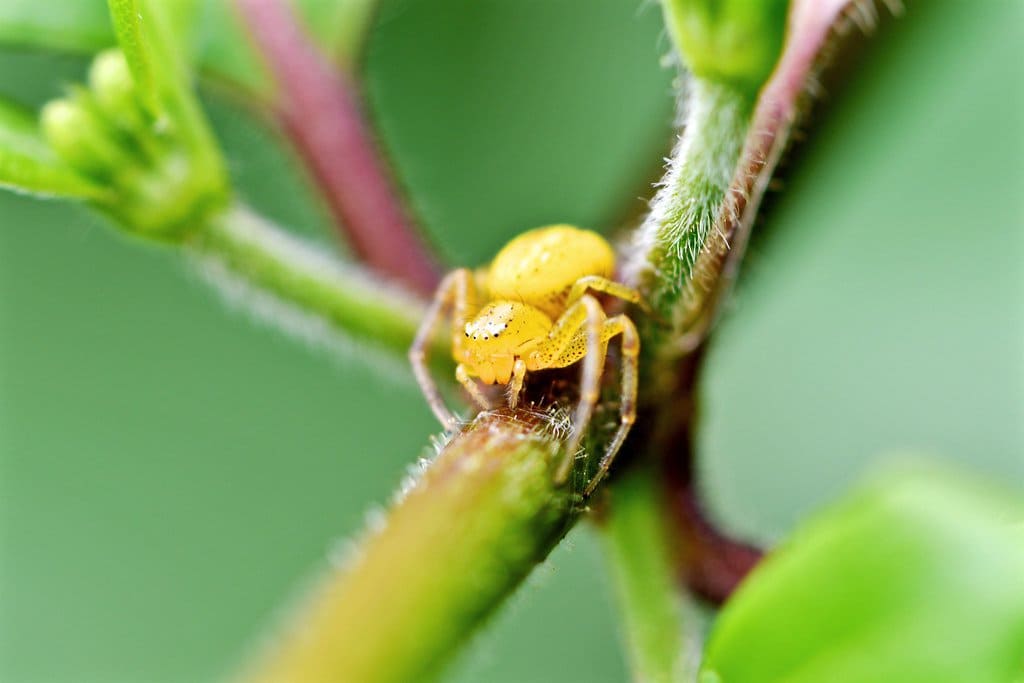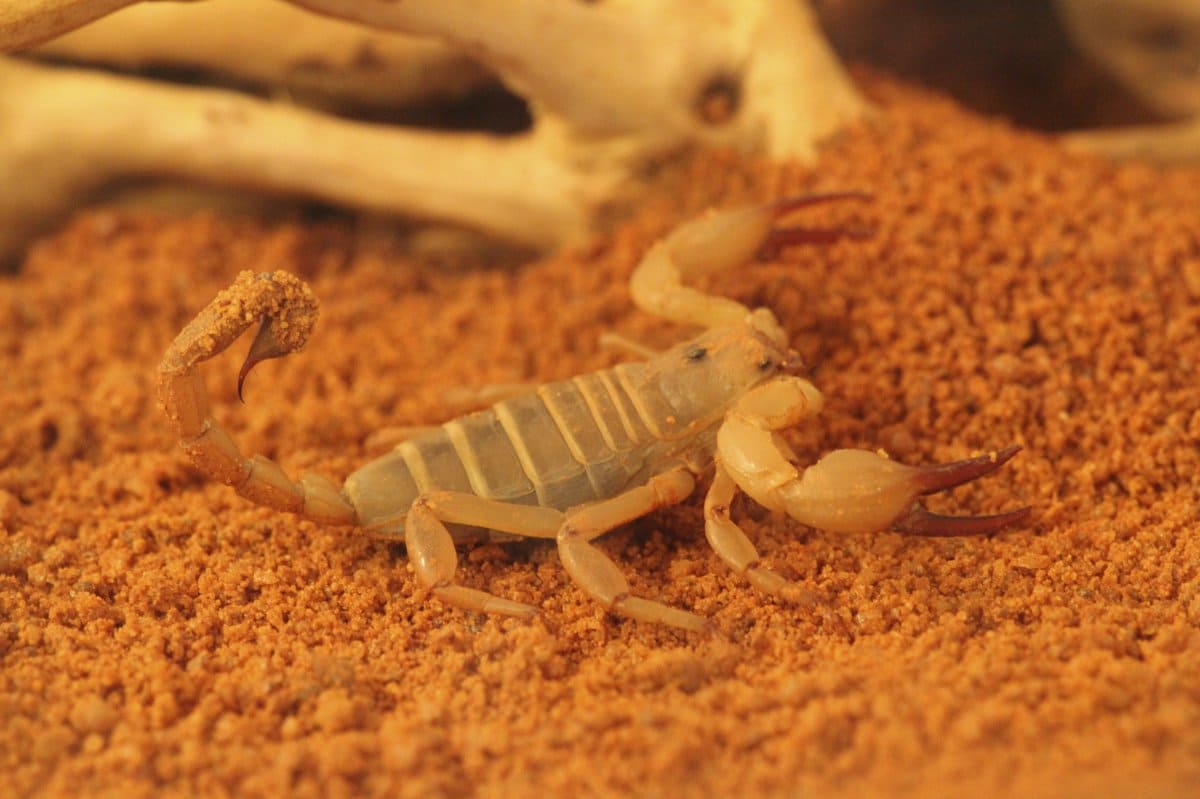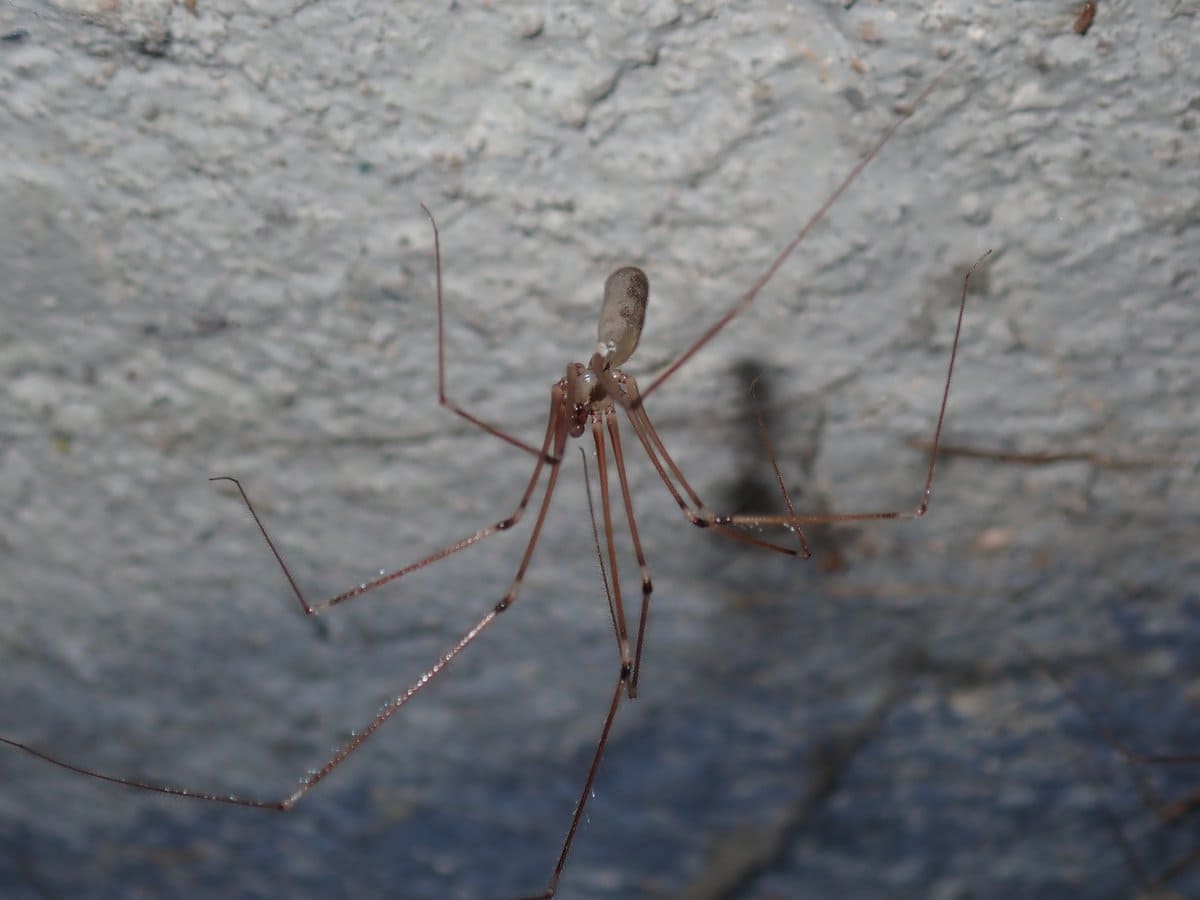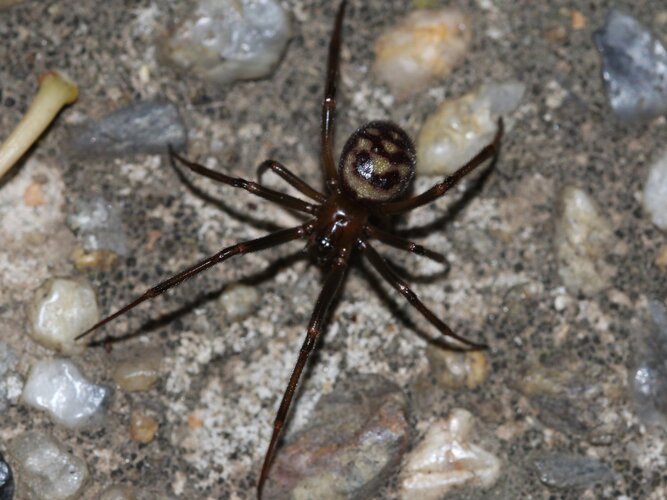Coccinellidae
IUCN
LCBasic Information
Scientific classification
- name:Coccinellidae
- Scientific Name:Coccinella septempunctata,ladybirds,ladybug,Fatty, matchmaker, sister Hua, Tiandao worm, golden turtle, pearl turtle, Dr. Mai, stinky turtle
- Outline:Arthropoda
- Family:Coccinellidae Coccinelloidea Cucujiformia Polyphaga Coleoptera
Vital signs
- length:1.26 to 11.2 mm
- Weight:5.2~7mm
- lifetime:1-3years
Feature
The body is hemispherical, usually the size of a soybean, and the wings are hard and metallic. The body of a ladybug is brightly colored, often with red, black or yellow spots. The number and arrangement of these spots are important features that distinguish different types of ladybugs.
Distribution and Habitat
Widely distributed throughout the world, mainly in Asia, Europe, North America and South America. Among them, China, Japan, South Korea and other Asian countries are the most common. The fauna of mainland China belongs to two realms. The southern part is about south of the middle and lower reaches of the Yangtze River. It belongs to the Oriental realm with the Indian Peninsula, the Malay Peninsula and its nearby islands. It is the central area of tropical animal distribution in eastern Asia; the northern part is from the northeast through North China and Inner Mongolia and Xinjiang to the Qinghai-Tibet Plateau north of the Qinling Mountains. According to this feature, China is divided into three major natural regions-the monsoon region, the Mongolian-Xinjiang Plateau region and the Qinghai-Tibet Plateau region.
It lives in natural and artificial environments. In natural environments, grasslands, gardens, orchards and fields, trees, or crawling on flower stems, or living under leav
Appearance
The body shape is usually short ovate to round, with a strongly arched back and a flat ventral surface. The adult ladybug's body length is generally between 1.0 and 16.0 mm. Their bodies are hemispherical and only the size of soybeans; their wings are hard and have a metallic luster. The back of the body is strongly arched and the ventral surface is usually flat. Viewed from the back, the pronotum and the base of the elytra are often closely connected and usually have similar widths. The head is often embedded in the prothorax and is sometimes completely covered by the pronotum. The back of the pronotum and elytra are smooth, or often have sparse or dense small short hairs. There are many members of the ladybug family, brightly colored, often with red, black or yellow spots, which are distributed on the elytra on the back. Ladybugs can be divided into different species according to the number and distribution of spots.
Details
Ladybugs (scientific name: Coccinellidae, binomial name: Coccinella septempunctata), the "lady" in the English name ladybirds (also known as ladybug) is generally considered to be an allusion to the Virgin Mary in the Catholic faith. It is a common name for beetles with round protrusions. Other names include: Fat Little, Matchmaker, Flower Sister, Heavenly Bug, Golden Turtle, Pearl Turtle, Mai Dafu, and even some species are commonly called Stinky Turtle because their secretions have a foul odor (but this is also a mixed name). It belongs to the Coleoptera family and is a small insect with brightly colored bodies, often with red, black or yellow spots. There are more than 6,900 species of ladybugs in the world. China has recorded 10 subfamilies, 22 tribes, 83 genera and 1,072 species, and more than 450 species in North America. The adult body of a ladybug is about a few mm to 1 cm long, with a semi-spherical body shape and short legs and antennae. The body colors include black, blue, red, orange, yellow, brown and other bright colors, and the patterns on the body will also vary depending on the species.
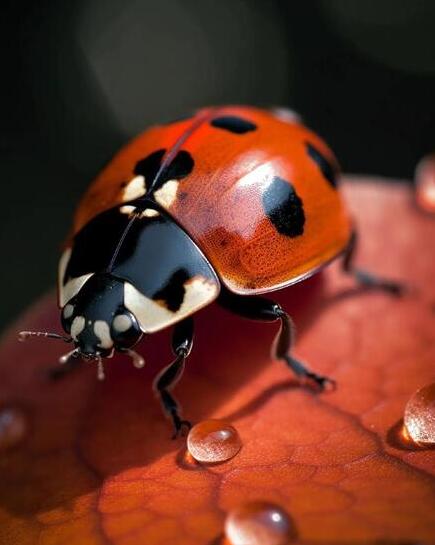
There are probably the following types of ladybugs: seven-spotted ladybugs, two-spotted ladybugs, four-spotted ladybugs, six-spotted ladybugs, double seven-spotted ladybugs, nine-spotted ladybugs, ten-spotted ladybugs, eleven-spotted ladybugs, twelve-spotted ladybugs, thirteen-spotted ladybugs, fourteen-spotted ladybugs, twenty-eight-spotted ladybugs, knife-horned ladybugs, big red ladybugs, red-ringed ladybugs, vertical-striped ladybugs, six-spotted shield ladybugs, bright-colored broad shield ladybugs, etc.
Brief
Ladybugs are typical natural enemies of the Hemiptera order. Carnivorous ladybugs feed on aphids and scale insects. The herbivorous Epilacninae subfamily is a very destructive agricultural pest, such as the Mexican bean beetle (Epilachna varivestis). However, ladybugs are often used as biological control agents, and the introduction of ladybug species can drive away and replace existing ladybugs.
When some ladybugs are subjected to strong physical stimulation, they will appear to be in a state of suspended animation and secrete yellow, sticky, irritating body fluids from their joints and stings. The body fluids of ladybugs have a strong odor and bitter taste, which can help them avoid attacks from external enemies [3]. The bright color of ladybugs can be said to be a warning color used to warn external enemies. Therefore, creatures such as birds rarely catch ladybugs, but there are still natural enemies such as parasitic wasps, parasitic flies, and fungi. In addition, mantises prey on the larvae of potato beetles.
Depending on the species, their diet varies greatly. They can be mainly divided into three types: carnivorous species that prey on aphids and scale insects, fungi that survive on powdery mildew fungi, and herbivorous species that survive on Solanaceae plants. Therefore, for crops, they can be classified into beneficial insects and pests. In recent years, carnivorous species have been used as biological pesticides to replace pesticides in organic cultivation of crops.
Appearance characteristics
Its body shape is usually short oval to round, with a strong arch on the back and a flat ventral surface. The adult body length of ladybugs is generally between 1.0 and 16.0 mm. Their bodies are hemispherical and only the size of soybeans; their wings are hard and have a metallic luster. The back of the body is strongly arched, and the ventral side is usually flat. From the back, the pronotum and the base of the elytra are often closely connected, usually of similar width. The head is often embedded in the pronotum, and sometimes completely covered by the pronotum. The back of the pronotum and elytra are smooth, or often have sparse or dense small short hairs. There are many members of the ladybug family, brightly colored, often with red, black or yellow spots, which are distributed on the elytra on the back. According to the number and distribution of spots, ladybugs can be divided into different species. For example, there are 7 black spots on the elytra of the seven-spotted ladybug, while the twenty-eight-spotted ladybug has more spots.
The seven-spotted ladybug is a type of ladybug with an oval body, a body length of 5.2~7mm, and a body width of 4.0~5.6mm. The head is black, the antennae are dark brown, and there is a quadrilateral light yellow spot on each front corner of the head. The scutellum is black, with 7 black spots on the elytra, and a triangular yellow-white spot at the base on each side; the abdomen and legs are black.
Most ladybugs have the following three characteristics: the mandibular palp is axe-shaped, the tarsus is hidden in four segments, and the first ventral plate has a posterior base line, which can be distinguished from other closely related species. The ladybug's legs and antennae are short (usually not obvious), and there are no obvious punctures on the back of the elytra, which also help to distinguish it from other similar families. These characteristics together constitute the unique appearance of ladybugs, making it unique in the insect world.
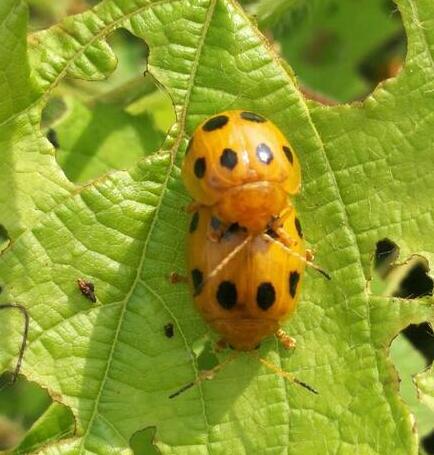
Distribution and Habitat
Widely distributed throughout the world, mainly in Asia, Europe, North America and South America. Among them, it is most common in Asian countries such as China, Japan, and South Korea. The fauna of mainland China belongs to two kingdoms. The southern part is approximately south of the middle and lower reaches of the Yangtze River. It belongs to the Oriental kingdom with the Indian Peninsula, the Malay Peninsula and its nearby islands. It is the central area of tropical animal distribution in eastern Asia; the northern part is from the northeast through North China and Inner Mongolia and Xinjiang north of the Qinling Mountains to the Qinghai-Tibet Plateau. According to this characteristic, China is divided into three major natural regions: the monsoon region, the Mongolian-Xinjiang Plateau region, and the Qinghai-Tibet Plateau region. In addition, ladybugs have been introduced to other regions, such as North America from 1951 to 1971, which provide abundant food sources and suitable living environments, allowing ladybugs to thrive. They adapt to various environments, including natural and artificial environments. In natural environments, grasslands, gardens, orchards and fields, between trees, or crawling on flower stems, or living under leaves are their common habitats. They can survive in warm and humid environments, and can also adapt to urban environments, and are commonly found in parks and street green belts. In addition, ladybugs can also survive in urban environments, especially in parks and street green belts. These areas provide ladybugs with shelter and food sources, allowing them to survive and reproduce in human-inhabited environments. Biological life cycle Ladybugs are completely metamorphosed insects. They go through four stages in their life: eggs, larvae, pupae, and adults. The larvae have the same habits as the adults, growing rapidly, eating a lot, and have 4 instars. Adults reproduce 1-2 times a year, laying up to 400 eggs, and the incubation period is about 7 days. The lifespan is generally only 3 years.
Eggs: After mating, the eggs of adults are often long oval or spindle-shaped, with pointed ends, and the colors range from light yellow to reddish yellow, yellow, white, orange and pink. Different species have different egg-laying habits. The length of the eggs varies from 0.25 to 2.00 mm. Some are laid alone, and some are laid in piles. When the female lays eggs, the eggs are fertilized only when they pass through the opening of the female's sperm storage device. At this time, the sperm enters the egg through many small holes (egg holes) at one end of the egg, and will cling to the food to lay eggs for the newly hatched larvae to eat.
Larvae: After hatching, the larvae are wingless, with their abdomens extending backwards. They vary greatly in body shape. The crawling larvae will stay on the egg shells, usually for a few hours or a day at most, waiting for the body surface, mouthparts and other organs to harden. The larvae then disperse to find food. Generally, the mouthparts of the head are downward, with three pairs of well-developed thoracic legs, and a foot protrusion is formed at the end of the abdomen, which plays a role in fixing the body during movement and pupation. Ladybugs are often spindle-shaped, and also have an arched back. Some groups have thorn warts or hair warts on the back. Some have flat bodies and no thorns or hair warts on the back. Some even have waxy substances covering the back, with protrusions and thorns on the body, which is very different from the adult shape. There are usually three molts, and the larvae are divided into four instars. They stop feeding before molting, use the anus at the tail to fix on the substrate, and molt with their heads down. Before pupation, the 4th instar larvae do not eat or move.
Pupa: Among beetles, there are cases where the larvae and adults have different diets, but ladybugs mostly have the same food for larvae and adults. In addition, when the food is insufficient, carnivorous ladybugs occasionally cannibalize other larvae or pupae. After growing to a certain extent, the larvae form pupae on the back of the leaves of plants. The pupa of the ladybug is naked, and before pupation, the foot process at the end of the abdomen fixes its body to the end that sticks to the substrate. It is oval in shape, with short wings, but it is close to the adult form at this time. During the growing season, the egg period of most ladybugs is 2 to 4 days, the larvae are 9 to 15 days, and the pupae are 4 to 8 days. It takes 16 to 25 days from egg to adult. Some of the molted shells after pupation are placed at the tail end of the pupa, and the pupa is completely exposed. There are also cases where the molted shells after pupation do not fall off at the tail end of the pupa, but only crack in the front or the center of the back. The abdomen will be attached to the branches to prevent it from falling to the ground, and most of the pupa surrounding it will harden and become a shelter for the pupa.
Adult: The wings of the newly emerged adult are yellow, and the elytra are very soft, light-colored and without spots. The spots on the elytra gradually appear, sometimes in a few minutes, hours, or even days or weeks. But as the wings harden, they will present characteristic patterns. Adult ladybugs can be often seen from spring to autumn. Most ladybugs spend the winter in the form of adults. When they hibernate, they will hide under stones and fallen trees in groups. The size of the group ranges from a few to hundreds or even tens of thousands.
The lifespan of ladybugs varies. Some species with longer dormancy periods can survive for about 1 year, and it is common to live for two years. If some adults do not have suitable egg-laying conditions, they can spend the second winter without laying eggs.
Living habits
Ladybugs like to migrate in groups, have no fixed residence, can endure various harsh climates, can swim and dive, and further enhance their adaptability and predation ability in the natural environment. Ladybugs mainly feed on pests that harm crops, such as aphids and scale insects.
Foraging
Ladybugs can be divided into two categories based on their feeding habits: herbivorous and carnivorous. Carnivorous ladybugs account for the vast majority of ladybugs, and they mainly prey on agricultural pests, including various aphids, scale insects, whiteflies, spider mites, and other arthropods. Among the carnivorous ladybugs, the seven-spotted ladybug (Coccinella septempunctata) is one of the most famous species. It belongs to the carnivorous ladybugs and is named for its bright red or orange-yellow elytra and three black spots on each side and one black spot in the center (a total of seven black spots). The seven-spotted ladybug particularly likes to eat cotton aphids, peach aphids, etc., and can eat hundreds of aphids every day, so it is regarded as a beneficial insect in farmland, vegetable gardens, and orchards. The ladybug's hunting method is mainly through its carnivorous behavior, preying on various agricultural pests. Look for a suitable habitat, that is, the parasitic plant of the prey, and then look for prey on the plant, catch it and prey. Obviously, vision plays an important role in the process of finding habitat; but there are exceptions. Some plant volatile substances have an effect on the foraging of some ladybugs. For example, for the gray-eyed ladybug, the volatile substances of pine trees are more attractive.
In summary, ladybugs mainly prey on agricultural pests through their carnivorous behavior and are an important part of the ecosystem. Their existence helps maintain ecological balance and promote the health and stability of the ecosystem. The ladybug's diet includes a variety of agricultural and forestry pests, making it a strong candidate for biological control "natural enemies" (a professional term for natural enemies, referring to an animal in nature that specifically preys on or harms another animal). It can effectively control the number of harmful insects such as aphids, scale insects, whiteflies, mites, etc., reduce dependence on pesticides, and protect the health and yield of plants.
Species harm
Not every ladybug is beneficial. The twenty-eight-spotted ladybug is a typical harmful ladybug that harms vegetables, mainly eggplant and potatoes.
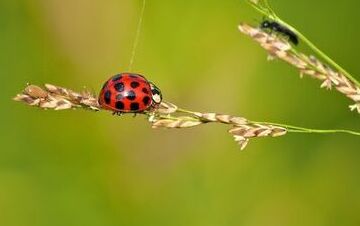
Species introduction
Classification by feeding habits
[Predatory]: There is a certain degree of specificity.
The seven-spotted ladybug (Coccinella septempunctata) is a representative ladybug widely distributed in Africa, Europe, and Asia. The body length is about 8mm, the wings are red, and as the Chinese name suggests, it has 7 black patterns. There is no difference in patterns between different individuals. It feeds on aphids and spider mites. When food is insufficient, the larvae may cannibalize each other.
Harmonia axyridis is widely distributed in Asia and other places. It is listed as a representative species along with the seven-spotted ladybird. It is about 7mm long. Unlike the seven-spotted ladybird, its body color varies greatly, including black background with 2 red spots, black background with 4 red spots, and multiple red and yellow patterns. It preys on aphids.
Menochilus sexmaculatus is about 5mm long, slightly smaller than the Harmonia. Its wings are black background with 4 red spots. There are species with similar patterns to the Harmonia and it is difficult to distinguish. It feeds on aphids.
Aiolocaria hexaspilota is also called the six-spotted ladybird. It is a large ladybird about 12mm long. Its wings have a black background with orange patterns, which are named because they are similar to the image of a tortoise shell. It preys on the larvae of the walnut flower beetle.
Propylaea japonica has a similar pattern to the large propylaea, but is only about 4mm long. It feeds on aphids.
Synonycha grandis is a large ladybug about 12mm long, but is rare. It preys on scale insects.
Rodolia cardinalis is a small ladybug about 4mm long. Its wings are red with black patterns. It feeds on the cotton scale insect (Icerya purchasi). It is native to Australia and was introduced to other places to breed in order to drive away the cotton scale insect.
Chilocorus rubidus is a ladybug that feeds on scale insects. It often lives on plum trees. The "rubidus" in its scientific name (which means red in Latin) is because its red stripes look like rubies.
[Mycophagy]
Illeis koebelei is also called the yellow ladybug. The body is about 5mm long. There are two black spots on the chest with a white background, and the wings are all yellow. It feeds on powdery mildew fungi, etc.
Vibidia duodecimguttata is also called white ladybug. The body is about 4mm long. The body color is yellow-brown with light white spots. It feeds on powdery mildew fungi, etc.
[Herbivorous]: Only the herbivorous subfamily of Coccinellidae is herbivorous. The characteristic of herbivorous ladybugs is that the wings are not shiny compared with carnivorous ladybugs.
Henosepilachna vigintioctopunctata
Potato ladybug (Henosepilachna vigintioctomaculata) These two ladybugs are about 7mm long and have 28 black spots on their light brown bodies. The potato ladybug is also called the large twenty-eight-spotted ladybug, and its body and black spots are slightly larger than those of the twenty-eight-spotted ladybug. They are considered pests because they eat eggplant and potato leaves collectively. Among the subfamily of phytophagous beetles, the potato beetle has the highest latitude distribution area, reaching as far north as the Primorsky Krai. The twenty-eight-spotted ladybird of the eggplant is distributed from Hokkaido to the south, all the way to Southeast Asia.
Henosepilachna boisduvali is found in Okinawa Islands, Japan, Lanyu, Taiwan, etc. It feeds on the leaves of cucurbitaceae plants.
Henosepilachna pusillanima is found in Yonaguni Island and other places in the Yaeyama Islands of Japan, and Lanyu, Taiwan.

